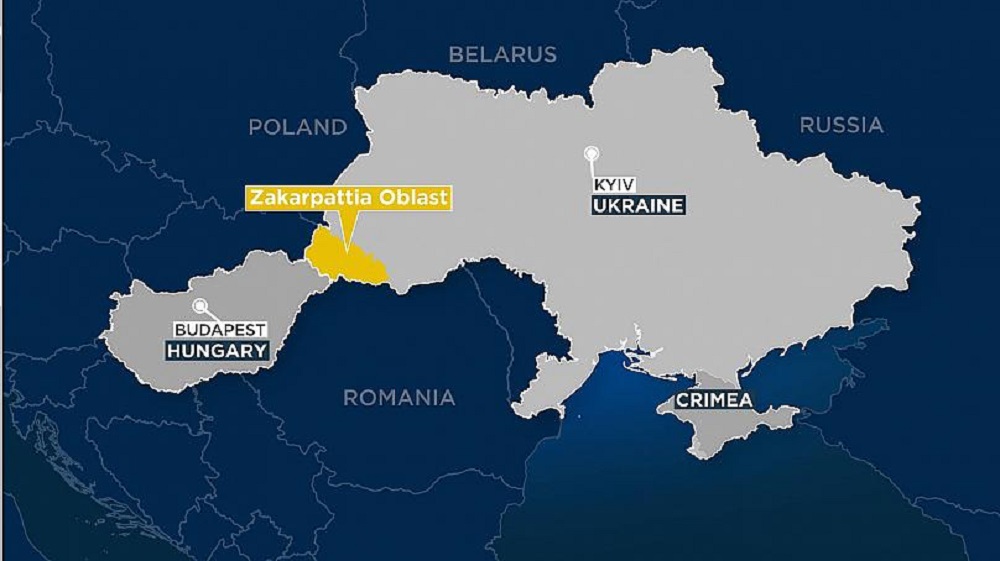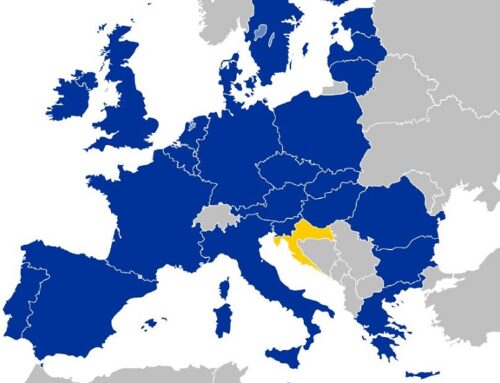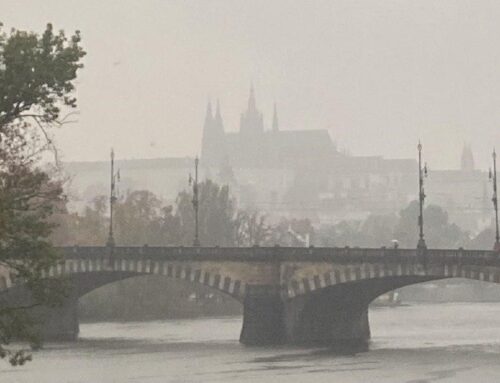In 2017, the Ukrainian government has adopted the Law “On education” [i], which has become a source of tensions between Ukraine, Moldova, Russia and certain EU member states. Under the pressure of Poland, Romania, Bulgaria, Hungary, and Greece, the government even addressed the Venice Commission to clarify compliance of the Law with Ukraine’s commitments to preserving national minority rights [ii]. However, no other EU member reacted as fiercely as Hungary. Except for the statements of criticism, the Hungarian government has turned to such leverages as, for example, blocking NATO-Ukraine negotiations [iii] and Ukrainian issues on the EU level, which caused a negative reaction from Ukrainian authorities and society. However, is it only the fault of education law, that made Hungary adhere to such measures of response?
The context
The trigger for all the claims is connected with Article 7 of the Law, which regulates the language of education. In brief, it says that education throughout Ukraine should be conducted in Ukrainian, in derogation from previous provisions of the Law of Ukraine “On Principles of State Language Policy” of 2012, which allows teaching in the languages of minorities in schools in regions where such minorities make up more than 10% of the population, to the extent necessary for the socialization of students from such minorities [iv][v]. Also, the Law guarantees the right of minorities to study in the relevant minority language in primary school (the first four years of schooling), and to study their language as a secondary subject on the further education levels, allowing only representatives of indigenous peoples (Crimean Tatars) to maintain bilingual education until the end of high school [vi][vii][viii]. Such changes should come into force after the 3-year transition period [ix].
The Ukrainian government was trying to justify this as the counter-response to historical and artificial domination of schools with the Russian language of education, which is now used as a source of propaganda and hybrid war by the Russian government. Another argument concerned the quality of secondary education of children from national minorities. As for Hungary, with 71 Hungarian-speaking schools, 62% of school graduates failed a compulsory Ukrainian language test, losing an opportunity to study in Ukrainian universities. In particular, this number is the highest in Berehove district with the most Hungarian-speaking population in Ukraine, where 75% of graduates failed the Ukrainian language exam [x]. Therefore, the Law is aimed at increasing the possibilities for minorities to exercise their constitutional rights by ensuring their studies in Ukrainian.
These arguments, however, did not satisfy the sides. From a Hungarian perspective, the Law means violating the rights of its about 150,000 minority to study in the native language [xi], as well as it eliminates their opportunities within Ukrainian society [xii]. And from now on the ‘never-ending story’ with mutual accusation and interrupted cooperation plans begins.
Determinants for Hungarian position
The position of Hungary could be explained from several perspectives. One of the factors here lies in strong political and economic ties between Hungary and Russia. This could explain the rhetoric of “Russian Crimea”, lifting sanctions on Russia and others that have already been raised by Viktor Orbán in 2014 and 2015 [xiii]. Also, the major role in establishing pro-Russian moods was played by the Hungarian elite’s business contacts [xiv], as well as the dependency of Hungary on Russian energy-related support. The reaction to the Law “On education” is just an example of support for ‘suppressed national minorities’, and providing parallels with current Russian politics, which could help Hungary both to maintain relations and to protect the interests of Hungarian governmental elite.
The second reason lies in historical context and current political developments in Hungary itself. The region of Transcarpathia (Zakarpattya oblast’ in Ukraine) has been under the decades-length governance of the Austro-Hungarian empire / Hungary. However, this territory has been seized under the provisions of the 1920s Treaty of Trianon, which is still considered as a major defeat among Hungarians [xv]. Also, due to international and domestic developments, more than 2 million Hungarians are living abroad [xvi], and almost 150,000 of them are ‘concentrated’ in Zakarpattya, Ukraine. This could explain why Hungary is still playing with the issue of historic and cultural ties in the region [xvii]. Moreover, the current political ideology could be also named among the reasons for the reaction to the education law. The nationalistic rhetorics in Orbán’s government are being used even on the issue of ‘foreign Hungarians’ – the government is providing them with different kinds of assistance to ensure their support for the current regime on the next elections.
Zakarpattya nowadays
The situation becomes more complicated because Hungary appears to be the major sponsor of Transcarpathia nowadays. In this region, Hungary is providing its abroad citizens and ethnic Hungarians with an eased procedure of issuing passports and work permissions, building churches, supporting cultural events, sponsoring Hungarian schools, and even a higher educational facility – Ferenc Rakoczi II Transcarpathian Hungarian College [xviii]. Overall, Hungary has invested billions of euros for the support of Zakarpattya [xix], which raised a certain level of support, especially among ethnic Hungarians loyal to the current regime. In contrast to this, Ukraine has a little to offer: Zakarpattya is not the most funded region in Ukraine, which received only a 2.6 million euros budget in 2018 [xx]. Besides, the region has several infrastructural, job-related, and other problems, which the Ukrainian government is in no hurry to help solve. This problem could be seen even through minor community concerns. A couple of years ago, the local activists were trying to receive money from Kyiv to build a monument to a famous Ukrainian writer, Taras Schevchenko, in the city of Berehove. But the government did not find both time and money to support the initiative, so, the Hungarian side was the one who sponsored it [xxi][xxii].
Post-Article 7 debates?
The worsening of the relations between Hungary and Ukraine did not stop on Article 7 only. In a swing of mutual disputes, the scandal with issuing passports by the Hungarian council occurred in 2018. On the video published on the internet, the Council asked citizens not to reveal the fact of issuance to Ukrainian authorities, since double citizenship is not allowed by Ukrainian laws. As a response to such actions, the diplomat was expelled, and the same actions went towards his Ukrainian colleague in Budapest [xxiii]. The other conflicts include the announcement of constructing a military base near Berehove by Ukrainian authorities and an appointment of the ministerial commissioner for the development of Transcarpathia (which is a part of Ukraine) by Hungary [xxiv]. All these events, in combination with the constant mutual accusations, are leading to the disruption in relations between the countries.
Conclusion
Even though the Ukrainian government took into consideration the Venice Commission recommendations on Article 7 by amending the Law [xxv], started the dialogue process with Hungary [xxvi], and has even adopted the language conflict to current plans on amending zoning of Ukrainian regions [xxvii], the tensions may continue along with the developments in the region. To overcome these, it is important for both Ukraine and Hungary to re-start the dialogue on cooperation, developing further ways of working together on both international and European arena, such as migration and labor issues, new trade dialogue, cultural cooperation, energy security, etc. [xxviii]
Sources:
[i] CDL-REF(2017)047-e Ukraine – The Law on Education adopted by the Verkhovna Rada on 5 September 2017 (for issue of language, see Article 7 and Concluding Remarks and Transitional Provision N° 18). URL:https://www.venice.coe.int/webforms/documents/?pdf=CDL-REF(2017)047-e
[ii] Ukraine–Hungary: the intensifying dispute over the Hungarian minority’s rights. OSW Commentary. Tadeusz Iwański, Andrzej Sadecki. URL: https://www.osw.waw.pl/en/publikacje/osw-commentary/2018-08-14/ukraine-hungary-intensifying-dispute-over-hungarian-0
[iii] Hungary to block Ukraine’s NATO membership over language law. Reuters. URL: https://www.reuters.com/article/us-ukraine-nato-hungary/hungary-to-block-ukraines-nato-membership-over-language-law-idUSKBN1Y823N
[iv] CDL-REF(2017)047-e Ukraine – The Law on Education adopted by the Verkhovna Rada on 5 September 2017 (for issue of language, see Article 7 and Concluding Remarks and Transitional Provision N° 18). URL: https://www.venice.coe.int/webforms/documents/?pdf=CDL-REF(2017)047-e
[v] Law „On Education” of 2017. URL: https://zakon.rada.gov.ua/laws/show/2145-19/ed20170905?lang=en#Text
[vi] CDL-REF(2017)047-e Ukraine – The Law on Education adopted by the Verkhovna Rada on 5 September 2017 (for issue of language, see Article 7 and Concluding Remarks and Transitional Provision N° 18). URL: https://www.venice.coe.int/webforms/documents/?pdf=CDL-REF(2017)047-e
[vii] Law „On Education” of 2017. URL: https://zakon.rada.gov.ua/laws/show/2145-19/ed20170905?lang=en#Text
[viii] Education Law 2017. 15 Main aspects. URL: http://rada-gov.com.ua/zakon-pro-osvitu-2017-15-golovnih-aspektiv/
[ix] New Ukrainian Law On Education: Why the Legislative Process Matters. URL: https://yur-gazeta.com/golovna/noviy-ukrayinskiy-zakon-pro-osvitu-chomu-zakonotvorchiy-proces-mae-znachennya.html
[x] CDL-REF(2017)051-e Ukraine – Ministry of Education and Science position on Article 7 of the Law on Education. URL: https://www.venice.coe.int/webforms/documents/?pdf=CDL-REF(2017)051-e
[xi] Tensions between Hungary and Ukraine escalate: what’s it all about? Kafkadesk. URL: https://kafkadesk.org/2018/10/11/tensions-between-hungary-and-ukraine-escalate-whats-it-all-about/
[xii] Hungary in language dispute with Ukraine over schools. BBC news. URL: https://www.bbc.com/news/world-europe-41565090
[xiii] Why Is Hungary Blocking Ukraine’s Western Integration? Atlantic Council. Péter Krekó, Patrik Szicherle. URL: https://www.atlanticcouncil.org/blogs/ukrainealert/why-is-hungary-blocking-ukraine-s-western-integration/
[xiv] THE KREMLIN’S INFLUENCE IN HUNGARY. An examination of Budapest’s ties to Moscow. Dániel Hegedüs. URL: https://dgap.org/en/research/publications/kremlins-influence-hungary
[xv] Honest History 4: Heat from Hungary. How Transcarpathia’s Hungarian past set up its tumultuous present. Kyiv Post. Veronika Melkozerova. URL: https://www.kyivpost.com/ukraine-politics/honest-history-heat-hungary-transcarpathias-hungarian-past-set-tumultuous-present.html
[xvi] Tensions between Hungary and Ukraine escalate: what’s it all about? Kafkadesk. URL: https://kafkadesk.org/2018/10/11/tensions-between-hungary-and-ukraine-escalate-whats-it-all-about/
[xvii] Kyiv vs Budapest: What`s going on in Ukrainian-Hungarian relations?. ICPS Press. URL: http://icps.com.ua/en/studies-icps/foreign-policy/kyiv-vs-budapest-whats-going-on-in-ukrainian-hungarian-relations/
[xviii] Stuck Between Ukraine and Hungary: Life in Transcarpathia. Hromadske International. URL: https://en.hromadske.ua/posts/stuck-between-ukraine-and-hungary-life-in-transcarpathia
[xix] Govʼt to launch HUF 25 bln program to support cross-border investments. Buuudapest Business Journal. URL: https://bbj.hu/business/govt-to-launch-huf-25-bln-program-to-support-cross-border-investments_184510
[xx] Honest History 4: Heat from Hungary. How Transcarpathia’s Hungarian past set up its tumultuous present. Kyiv Post. Veronika Melkozerova. URL: https://www.kyivpost.com/ukraine-politics/honest-history-heat-hungary-transcarpathias-hungarian-past-set-tumultuous-present.html
[xxi] Stuck Between Ukraine and Hungary: Life in Transcarpathia. Hromadske International. URL: https://en.hromadske.ua/posts/stuck-between-ukraine-and-hungary-life-in-transcarpathia
[xxii] Stuck Between Ukraine and Hungary: Life in Transcarpathia. Hromadske International. URL: https://en.hromadske.ua/posts/stuck-between-ukraine-and-hungary-life-in-transcarpathia
[xxiii] Diplomats thrown out in Ukraine-Hungary passport row. BBC news. URL: https://www.bbc.com/news/world-europe-45753886
[xxiv] Tensions between Hungary and Ukraine escalate: what’s it all about? Kafkadesk. URL: https://kafkadesk.org/2018/10/11/tensions-between-hungary-and-ukraine-escalate-whats-it-all-about/
[xxv] Ministry of Education and Science of Ukraine. URL: https://mon.gov.ua/ua/news/prijnyato-novij-zakon-pro-povnu-zagalnu-serednyu-osvitu-za-progolosuvali-450-nardepiv
[xxvi] Official slams “unacceptable” Ukrainian laws which discriminate against ethnic Hungarians in the country. About Hungary. URL: http://abouthungary.hu/news-in-brief/official-slams-unacceptable-ukrainian-laws-which-discriminate-against-ethnic-hungarians-in-the-country/
[xxvii] It is planned to create a “Hungarian” district: the Ukrainian authorities have made concessions to Budapest. Radio Svoboda. URL: https://www.radiosvoboda.org/a/30659882.html
[xxviii] History of relations between Ukraine and Hungary as dynamics and content of political dialogue. Ukrainian Prism Foreign Policy Council. Gennady Maksak, Sergey Gerasimchuk. URL: https://www.civic-synergy.org.ua/wp-content/uploads/2018/04/Istoriya-vidnosyn-Ukrayina-Ugorshhyna-yak-dynamika-ta-zmist-politychnogo-dialogu.pdf





